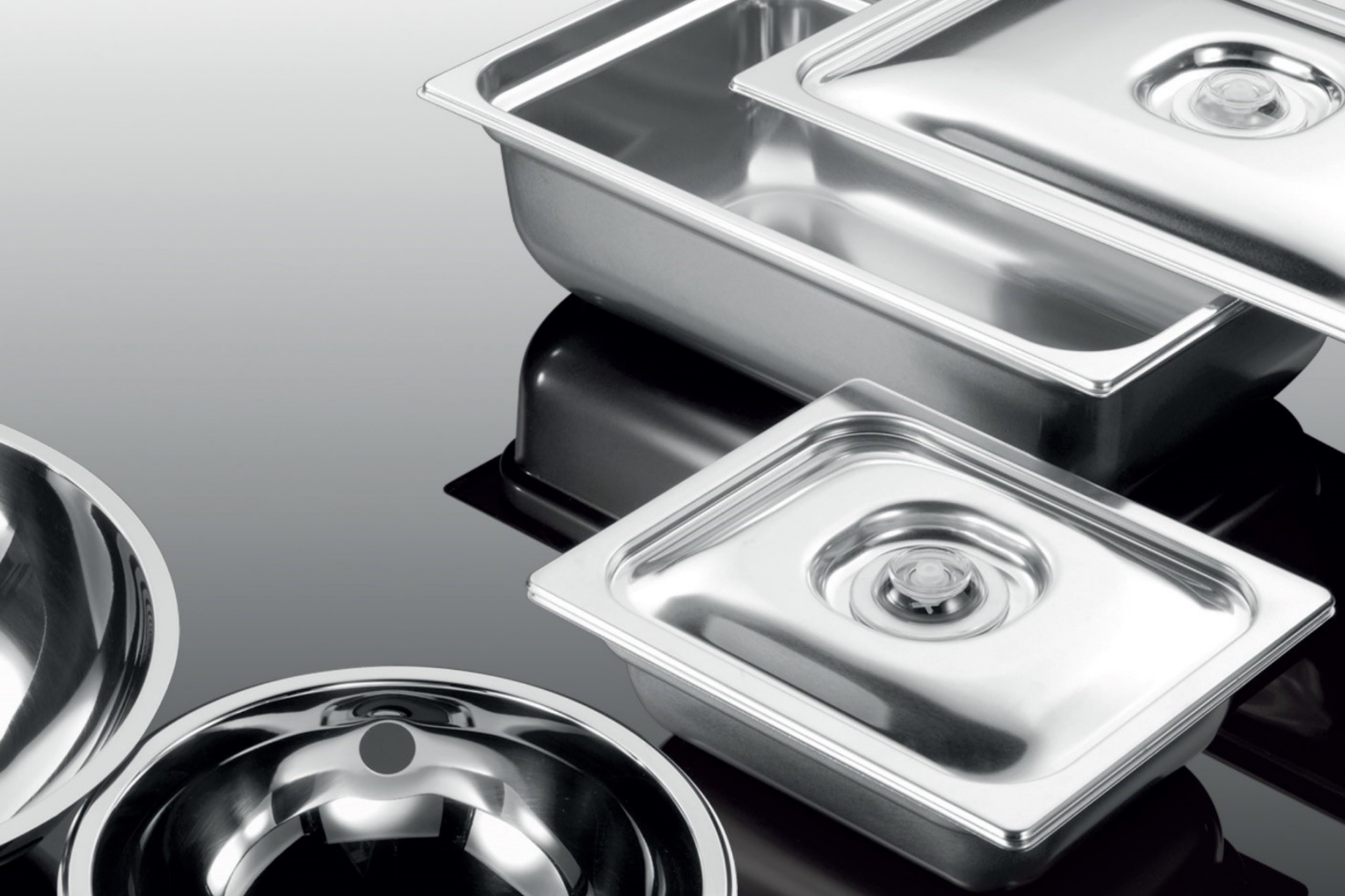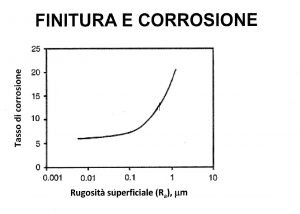NEWS

SURFACE FINISH AND FOOD SAFETY
In this short extract we want to clarify some basic concepts concerning stainless steels and the importance of surface finish.
Stainless steels and the passivation film
Stainless steels are alloys based on iron, chromium and carbon with the addition of other elements such as mainly nickel (Ni), molybdenum (Mo), manganese (Mn), silicon (Si) and titanium (Ti). These alloys are particularly resistant to corrosion in an oxidising environment due to their ability to passivate through oxygen adsorption.
This is due to the fact that the amount of chromium (Cr) in the composition of the alloy must be at least 10.5% with a maximum of 1.2% of carbon, according to EN 10020. In addition to the chromium content, another important prerequisite for the formation of the passivation film is the presence of an oxidising environment (such as the air we breathe or water) which promotes the spontaneous process of its formation or restoration, in case it is damaged.
The passivation film is fundamental for the good resistance of steel over time, as well as for adequately counteracting the various cases of corrosion. It is necessary to allow the material, both during processing and installation, to be able to exchange a sufficient quantity of oxygen with the surrounding environment, so that it can be considered in the optimum passivation conditions.
Corrosion resistance and the importance of surface finish
This passivation film can of course be more or less resistant and more or less bonded to the material depending on the concentration of chromium in the alloy and on the possible presence of other elements (e.g. molybdenum). Clearly, there are different levels of stainlessness and corrosion resistance. A stainless steel with a good surface finish in terms of low material roughness can be considered as a steel with good corrosion behaviour.
Surface finishes have not only an aesthetic value but, in close relation to their roughness, they play a fundamental role in corrosion resistance.
For stainless steels, in fact, surface finishes can significantly influence the effectiveness of the thin layer of oxides with which the surface is covered in sufficiently oxidising environments, thus determining a peculiar self-protection against corrosive agents.
Why can surface finish make THE difference in the food industry?
Especially for the food industry, it is essential that stainless steel has a surface finish that allows excellent cleanability (high bacterial removability and low retentivity).
Mori 2A subjects its products to special surface finishing treatments in order to obtain articles of excellent quality in terms of high corrosion resistance.
Below is a graph showing how surface finish (measured in terms of roughness) has a significant effect on corrosion; the lower the surface roughness, the lower the risk that the metal will suffer corrosive attack.
